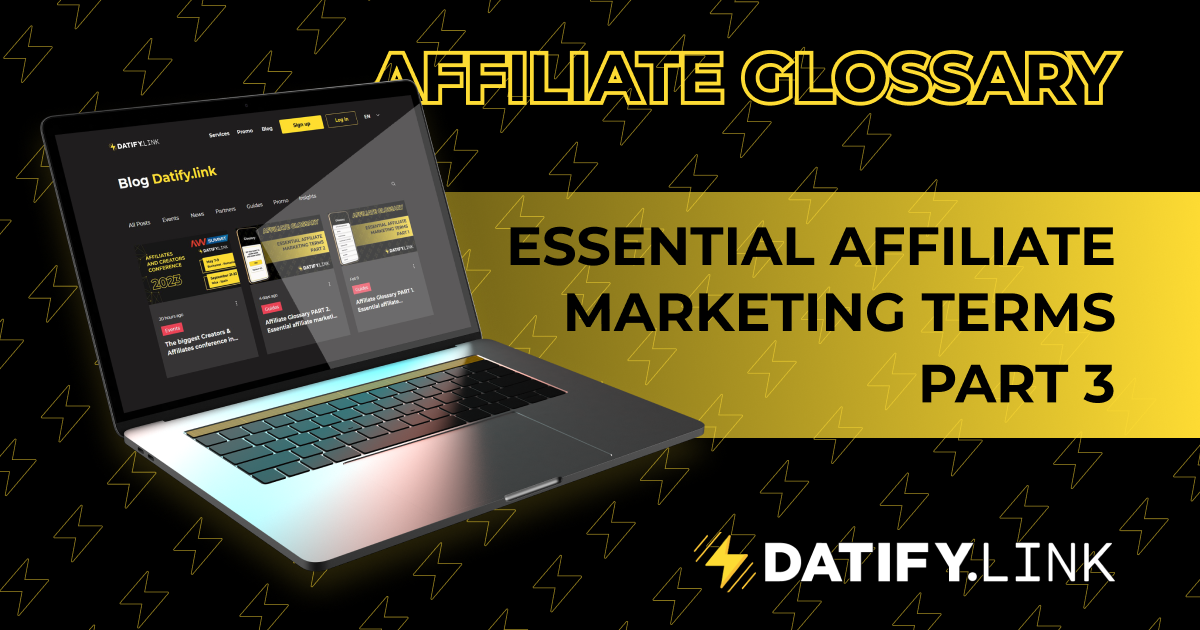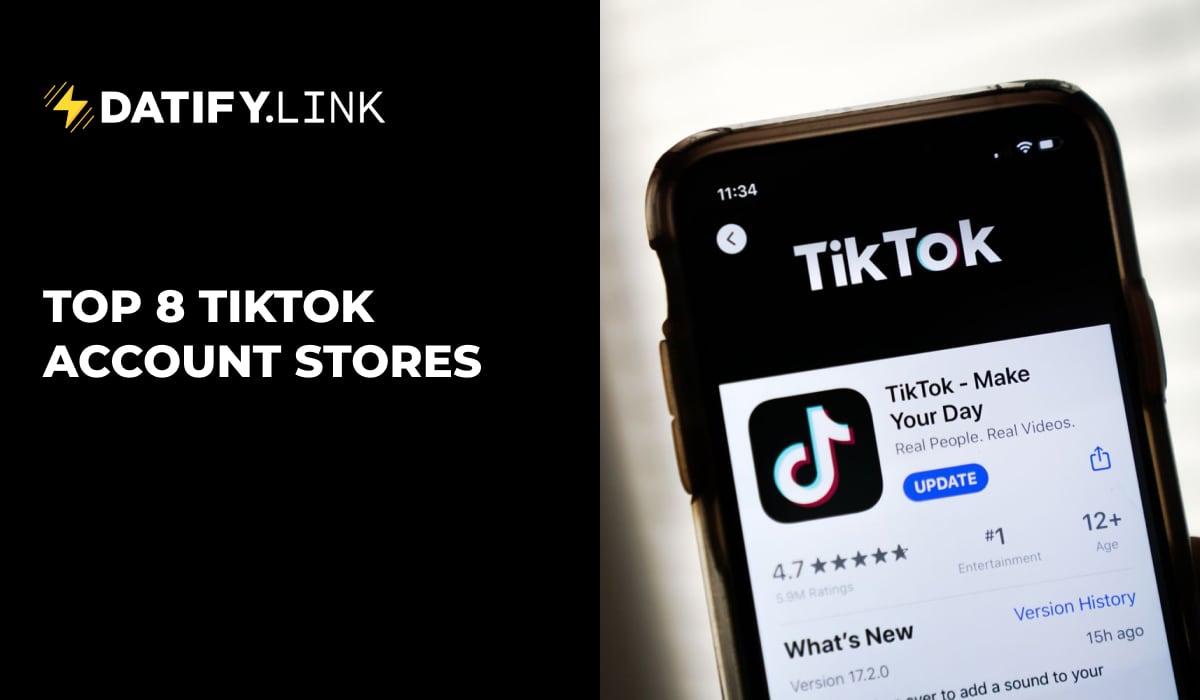Hello! We are ready to share with you the third part, which completes our dictionary of basic terms in affiliate marketing 🚀
Metrics to help you track performance in Affiliate Marketing 🔥
- EPC (Earnings per Click): а metric that calculates the average revenue generated for each click on an ad. It can be calculated by dividing total earnings by the number of clicks. This metric is often used to measure the performance of affiliate marketing campaigns and other types of pay-per-click advertising.
- EC (Earnings per Conversion): а metric that calculates the average revenue generated for each conversion or sale. It can be calculated by dividing total earnings by the number of conversions. This metric is often used to measure the performance of e-commerce campaigns, lead generation campaigns, and other types of advertising that are focused on generating conversions.
- CR (Conversion Rate): а metric that calculates the percentage of visitors to a website or landing page who complete a specific action, such as making a purchase, filling out a form, or subscribing to a service. It can be calculated by dividing the number of conversions by the number of visitors. This metric is often used to measure the effectiveness of landing pages, ad copy, and other elements of an advertising campaign.
- CTR (Click-through Rate): а metric that calculates the percentage of users who click on an ad out of the total number of users who view the ad. It can be calculated by dividing the number of clicks by the number of impressions. This metric is often used to measure the effectiveness of ad copy, targeting, and other elements of an advertising campaign.
- EPC (eff) (Effective Earnings per Click): а metric that calculates the average revenue generated for each click on an ad after taking into account the cost of the ad and all the deductions by advertiser. It can be calculated by dividing total earnings by the number of clicks and subtracting the cost of the ad and all the deductions by advertiser. This metric is often used to measure the profitability of an advertising campaign.
- EC (eff) (Effective Earnings per Conversion): а metric that calculates the average revenue generated for each conversion or sale after taking into account the cost of the ad and all the deductions by advertiser. It can be calculated by dividing total earnings by the number of conversions and subtracting the cost of the ad and all the deductions by advertiser. This metric is often used to measure the profitability of an advertising campaign.
- ROI (Return on Investment): а metric that calculates the profitability of an investment by comparing the return generated to the cost of the investment. It can be calculated by dividing the total profit by the total investment and multiplying by 100. This metric is often used to measure the performance of advertising campaigns, investments in assets, and other financial investments.
- ROAS (Return on Advertising Spend) is a metric that measures the effectiveness of an advertising campaign in generating revenue. It is calculated by dividing the revenue generated by the cost of the advertising campaign. It is expressed as a ratio or percentage, and is used to evaluate the effectiveness of different advertising channels and campaigns in generating revenue and to determine the ROI of an advertising campaign. A higher ROAS indicates a higher return on investment and a more effective advertising campaign. The ROAS metric is often used by businesses to optimize their advertising spend and to measure the performance of their advertising efforts.
Type 💎
- Impression: а metric that measures the number of times an ad is viewed by a user. It is also known as ad view.
- Click: а metric that measures the number of times an ad is clicked on by a user. It is also known as ad click.
- Host: а metric that measures the number of unique users that viewed an ad.
- Reg: а metric that measures the number of users that completed a registration form, or signed up for a service or product.
- Sale: а metric that measures the number of sales made as a result of an ad campaign.
- Lead: а metric that measures the number of users that provided contact information, such as an email address, phone number, or mailing address, in response to an ad.
- Trial: а metric that measures the number of users that initiated a free trial of a product or service as a result of an ad campaign.
Reg type 🔔
- SOI (Single Opt-In): а method of collecting leads in which the user only needs to provide their contact information, such as their email address, to sign up for a service or product. The user is not required to confirm their email address or take any additional steps before becoming a lead.
- DOI (Double Opt-In): а method of collecting leads in which the user must provide their contact information and then confirm their email address by clicking on a link sent to their email before they become a lead. This method is considered more secure and helps reduce the number of invalid or fake leads.
- Co-reg: а method of collecting leads in which multiple companies share a registration form or sign-up process to collect leads from a single user. This method is often used to increase the number of leads for a specific product or service.
- API Lead: а method of collecting leads in which a third-party application, such as a website or mobile app, uses an API (Application Programming Interface) to send leads to the advertiser. This method allows advertisers to collect leads from a wide range of sources and platforms.
Lead Type 🏆
- Approved: а lead that meets the required qualifications for a product or service and has been approved for further engagement or follow-up.
- Declined: а lead that does not meet the required qualifications for a product or service and has been declined for further engagement or follow-up.
- On hold: а lead that requires additional information or verification before it can be approved or declined.
- Fraud: а lead that is suspected or confirmed to be fraudulent and has been flagged for further investigation or rejection.
- Cancelled: Aа lead that has been cancelled by the advertiser or user.
At the end, we want to introduce you to the types of inventory advertising 🚀
- Banner: а graphic advertisement that typically appears at the top or bottom of a web page.
- Popup: а window that appears on top of a web page, often used to display an advertisement or a call to action.
- Popunder: а window that appears behind the current web page, often used to display an advertisement or a call to action.
- Clickunder: а window that appears when a user clicks on a link or button, often used to display an advertisement or a call to action.
- In-page push: а notification that appears within the current web page, often used to display an advertisement or a call to action.
- Web page push: а notification that appears on the user’s desktop, browser, or mobile device, often used to display an advertisement or a call to action.
- Push: а notification that appears on the user’s desktop, browser, or mobile device, often used to display an advertisement or a call to action.
- Back button popup: а window that appears when a user clicks the back button on their browser, often used to display an advertisement or a call to action.
- Second offer: а secondary advertisement or call to action that appears after a user interacts with a primary advertisement or call to action.
- Exit popup: а window that appears when a user attempts to leave a web page, often used to display an advertisement or a call to action.
- In-text ads: аn advertisement that appears within the text of a web page, often as a hyperlink or underlined word that when clicked, leads to an advertisement or a call to action.
- Interstitial: а full-screen advertisement that appears between two content pages, often used to display an advertisement or a call to action.
- Floating ad: аn advertisement that appears in a floating window on the screen, often used to display an advertisement or a call to action.
- Expandable ad: аn advertisement that expands to a larger size when clicked or hovered over, often used to display more information or a call to action.
- Pre-roll ad: а video advertisement that plays before the main content, often used in online video platforms.
- Post-roll ad: а video advertisement that plays after the main content, often used in online video platforms.
- Overlay ad: an advertisement that appears as a semi-transparent layer on top of the main content, often used to display an advertisement or a call to action.
- In-stream ad: an advertisement that appears within the content of a video or audio stream, often used in online video platforms.
- Skippable ad: a video advertisement that allows the user to skip it after a certain amount of time, often used in online video platforms.
- Native ad: an advertisement that is designed to blend in with the surrounding content, often used to display an advertisement or a call to action.
- Outstream ad: a video advertisement that plays outside of the main video content, often in a sidebar or between paragraphs of text on a website.
- Sticky ad: an advertisement that remains in a fixed position on the screen as the user scrolls, often used to display an advertisement or a call to action.
- In-game ad: an advertisement that appears within a video game, often used to display an advertisement or a call to action.
- Wallpaper ad: an advertisement that appears as the background of a website or app, often used to display an advertisement or a call to action.
- Masthead ad: a banner ad that appears at the top of a website, often used to display an advertisement or a call to action.
- Takeover ad: an advertisement that takes over the entire screen, often used to display an advertisement or a call to action.
- Background ad: an advertisement that appears as the background of a website or app, often used to display an advertisement or a call to action.
- In-app ad:an advertisement that appears within a mobile application, often used to display an advertisement or a call to action.
- Skin ad: an advertisement that covers a large portion of the website or app, often used to display an advertisement or a call to action.
- Adhesion ad: an advertisement that sticks to the edge of the screen as the user scrolls, often used to display an advertisement or a call to action.
Other useful terms 💰
- Refund: a process where a customer is given their money back for a product or service that they purchased. This can happen because of an issue with the product or service, a change of mind, or a mistake in the purchase process.
- Chargeback: a process where a customer disputes a transaction with their bank or credit card company, and the funds are returned to the customer while the merchant is charged a fee. Chargebacks are often the result of fraud or disputes over the quality of a product or service.
- Fraudulent activity: in the context of affiliate marketing, fraudulent activity refers to any illegal or unethical actions taken by an affiliate or advertiser to deceive or defraud the program or network. This can include activities such as:
- Click fraud: an affiliate or advertiser uses bots or other automated methods to artificially inflate the number of clicks on an ad, resulting in the affiliate earning commissions for fake traffic.
- Lead fraud: an affiliate or advertiser uses fake or misleading information to generate leads, resulting in the affiliate earning commissions for fake leads.
- Commission fraud: an affiliate or advertiser uses unauthorized means to earn commissions, such as hacking into a network’s system or creating fake transactions.
- CPA fraud: an affiliate or advertiser uses bots or other automated methods to generate fake conversions or actions, resulting in the affiliate earning commissions for fake conversions.
- Black hat SEO: an affiliate uses tactics to improve a website ranking in search engines that violate the terms of service of those search engines.
- Fraud: a type of criminal activity that involves deception or dishonesty in order to gain something of value. Fraud can take many forms, from identity theft and credit card fraud to Ponzi schemes and investment fraud.
- Forensiq: a company that provides fraud detection and prevention services for online businesses. They use a combination of technology and manual review to identify fraudulent activity, such as bot traffic, click fraud, and chargeback fraud.
- Antifraud: measures and techniques used to detect and prevent fraudulent activity. These can include things like fraud detection software, manual reviews, and security protocols.
- Antidetect: a software that allows users to bypass fraud detection systems by emulating a legitimate browser and hiding their true IP address. It is often used by fraudsters and can make it more difficult to detect fraudulent activity.
- White label: a product or service that is sold by one company to another company, which then rebrands and sells it as their own. White label products and services are often used in industries such as software development, e-commerce, and digital marketing.
- Blackhat: a term used to describe unethical or illegal methods used to gain an advantage in a particular field or industry. This can include activities such as hacking, spamming, and fraud.
- Whitehat: a term used to describe ethical or legal methods used to gain an advantage in a particular field or industry. This can include activities such as search engine optimization, content marketing, and social media marketing.





